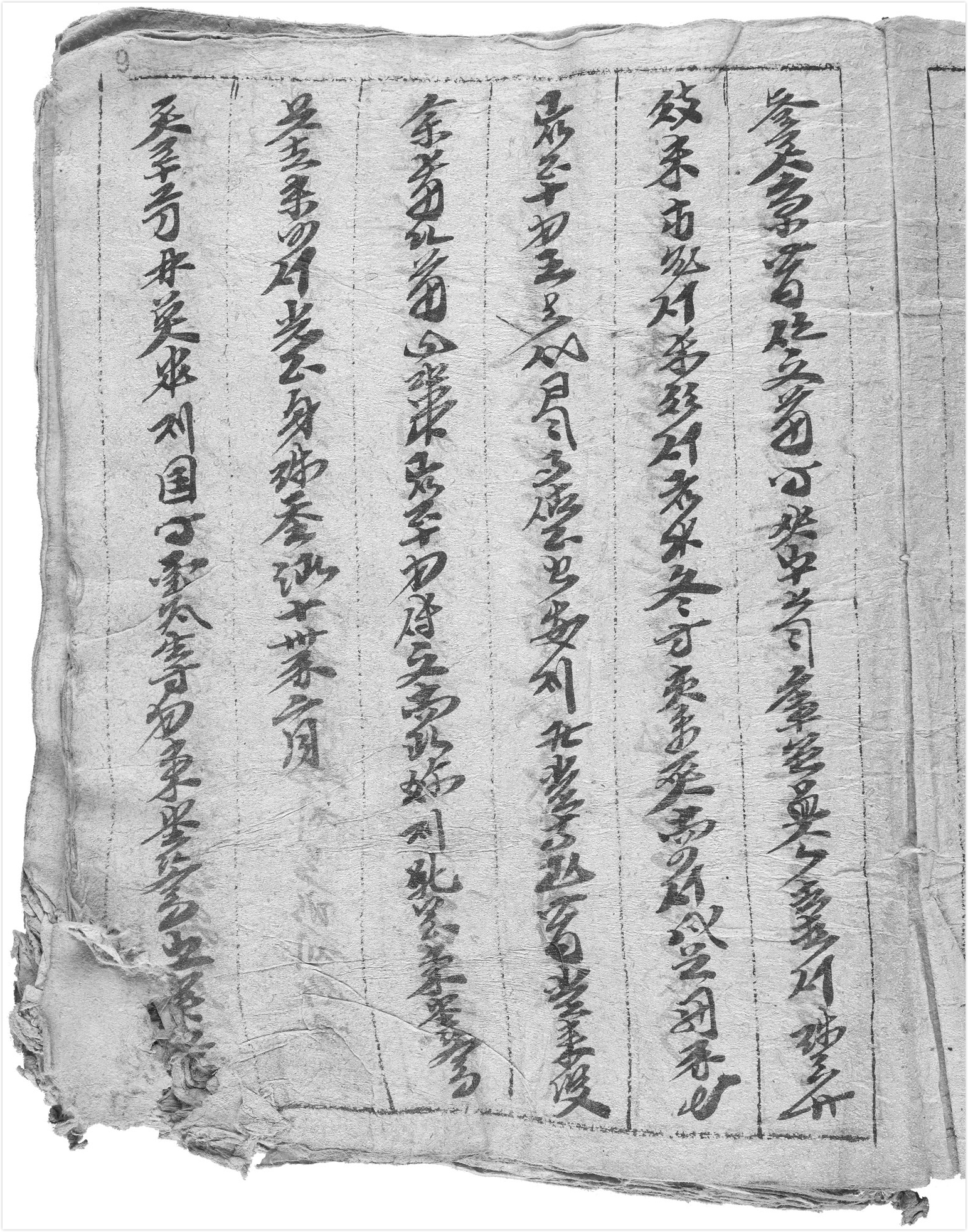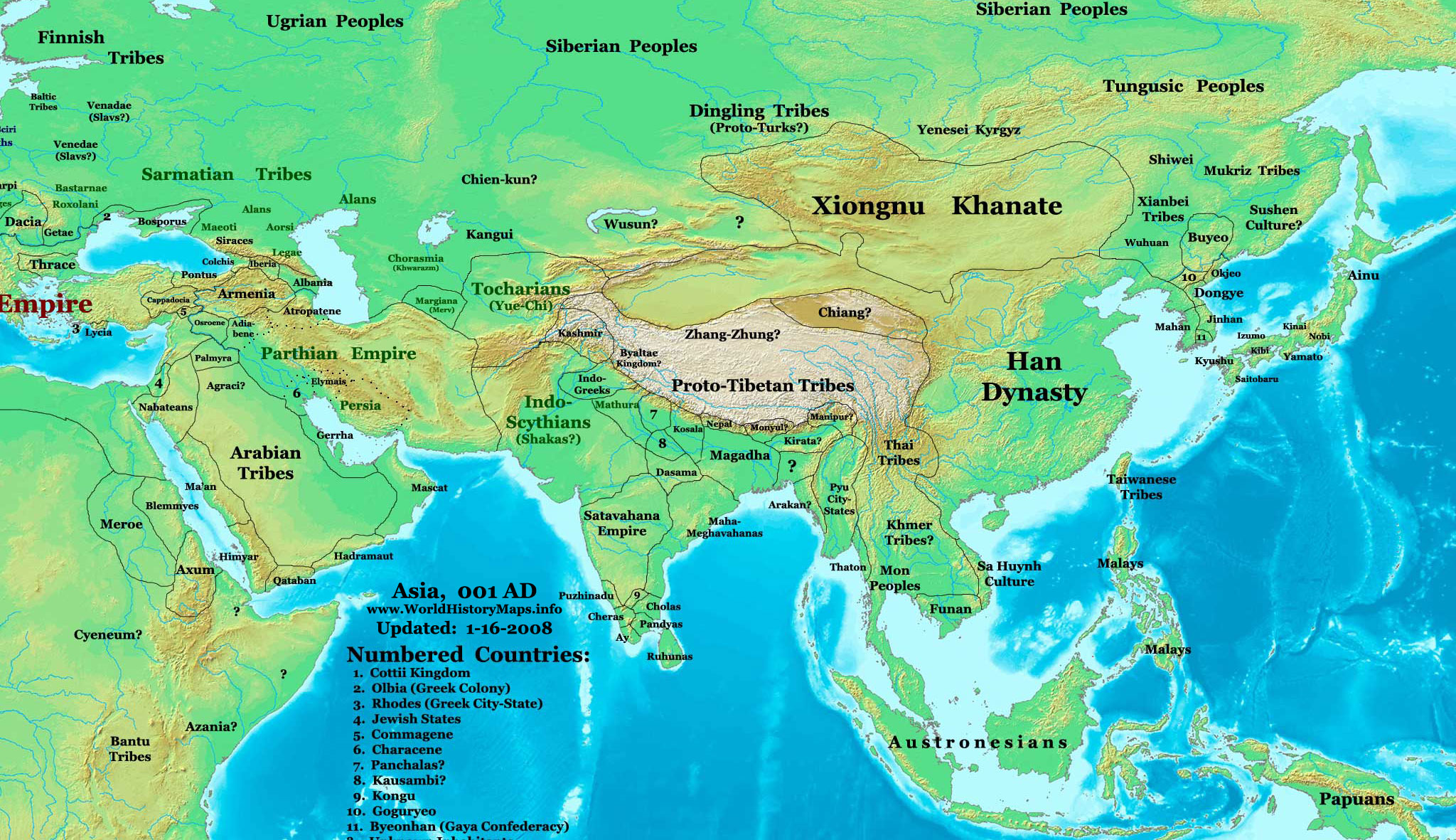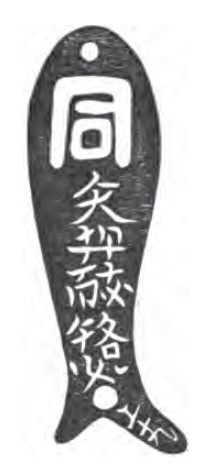|
Khitans
The Khitan people (Khitan small script: ; ) were a historical nomadic people from Northeast Asia who, from the 4th century, inhabited an area corresponding to parts of modern Mongolia, Northeast China and the Russian Far East. As a people descended from the proto-Mongols through the Xianbei, Khitans spoke the now-extinct Khitan language, a Para-Mongolic language related to the Mongolic languages. The Khitan people founded and led the Liao dynasty (916–1125), which dominated a vast area of Siberia, Mongolia and Northern China. The Khitans of the Liao dynasty used two independent writing systems for their language: Khitan small script and Khitan large script. After the fall of the Liao dynasty in 1125 following the Jurchen invasion, many Khitans followed Yelü Dashi's group westward to establish the Qara Khitai or Western Liao dynasty, in Central Asia, which lasted nearly a century before falling to the Mongol Empire in 1218. Other regimes founded by the Khitans included the ... [...More Info...] [...Related Items...] OR: [Wikipedia] [Google] [Baidu] |
Qara Khitai
The Qara Khitai, or Kara Khitai ( zh, t=喀喇契丹, s=哈剌契丹, p=Kālā Qìdān or zh, c=黑契丹, p=Hēi Qìdān, l=Black Khitan, links=no), also known as the Western Liao ( zh, t=西遼, p=Xī Liáo, links=no), officially the Great Liao ( zh, t=大遼, p=Dà Liáo, links=no), was a dynastic regime based in Central Asia ruled by the Yelü clan of the Khitan people. Being a rump state of the Khitan-led Liao dynasty, Western Liao was culturally Sinicized to a large extent, especially among the elites consisting of Liao refugees. The dynasty was founded by Yelü Dashi (Emperor Dezong), who led the remnants of the Liao dynasty from Manchuria to Central Asia after fleeing from the Jurchen-led Jin dynasty conquest of northern China. The empire was usurped by the Naimans under Kuchlug in 1211; traditional Chinese, Persian, and Arab sources consider the usurpation to be the end of the dynasty, even though the empire would not fall until the Mongol conquest in 1218. So ... [...More Info...] [...Related Items...] OR: [Wikipedia] [Google] [Baidu] |
Jin Dynasty (1115–1234)
The Jin dynasty (, ), officially known as the Great Jin (), was a Jurchen people, Jurchen-led Dynasties of China, imperial dynasty of China and empire ruled by the Wanyan clan that existed between 1115 and 1234. It is also often called the Jurchen dynasty or the Jurchen Jin after the ruling Jurchen people. At its peak, the empire extended from Outer Manchuria in the north to the Qinling–Huaihe Line in the south. The Jin dynasty emerged from Emperor Taizu of Jin, Wanyan Aguda's rebellion against the Liao dynasty (916–1125), which held sway over northern China until being driven by the nascent Jin to the Western Regions, where they would become known in Chinese historiography as the Qara Khitai, Western Liao. After conquering the Liao territory, the Jin launched a Jin–Song Wars, century-long campaign against the Song dynasty (960–1279) based in southern China, whose rulers were ethnically Han Chinese. Over the course of the Jin's rule, their emperors Sinicization, adap ... [...More Info...] [...Related Items...] OR: [Wikipedia] [Google] [Baidu] |
Mongols
Mongols are an East Asian ethnic group native to Mongolia, China ( Inner Mongolia and other 11 autonomous territories), as well as the republics of Buryatia and Kalmykia in Russia. The Mongols are the principal member of the large family of Mongolic peoples. The Oirats and the Buryats are classified either as distinct ethno-linguistic groups or as subgroups of Mongols. The Mongols are bound together by a common heritage and ethnic identity, descending from the Proto-Mongols. Their indigenous dialects are collectively known as the Mongolian language. The contiguous geographical area in which the Mongols primarily live is referred to as the Mongol heartland, especially in discussions of the Mongols' history under the Mongol Empire. Definition Broadly defined, the term includes the Mongols proper (also known as the Khalkha Mongols), Buryats, Oirats, the Kalmyks and the Southern Mongols. The latter comprises the Abaga Mongols, Abaganar, Aohans, Arkhorchin, Asud, ... [...More Info...] [...Related Items...] OR: [Wikipedia] [Google] [Baidu] |
Yelü Dashi
Yelü Dashi (; alternatively ), courtesy name Zhongde (), also known by his temple name as the Emperor Dezong of Western Liao (), was the founder of the Western Liao dynasty (Qara Khitai). He initially ruled as king from 1124 to 1132, then as emperor and gurkhan from 1132 to 1143. He was also known in Muslim sources as Nūshī Taifū, Qushqin Taifū or Qushqīn, son of Baighū. A member of the imperial Yelü clan, he fled the Liao dynasty in northern China as it was on the verge of destruction by the Jurchen-led Jin dynasty and moved westward into Central Asia where he established a new empire. Name There are various theories regarding his name. According to Sugiyama Masaaki, Dashi (大石) might be a borrowing from Chinese title '' taishi'' (太師). '' Qidan Guo Zhi'' suggests was just a nickname. Early life Yelü Dashi was a minor member of the Liao dynasty's imperial Yelü clan and an eighth generation descendant of the Emperor Taizu of Liao. His date of birth is ... [...More Info...] [...Related Items...] OR: [Wikipedia] [Google] [Baidu] |
Eagle Hunting
Hunting with eagles is a traditional form of falconry found throughout the Eurasian Steppe, practiced by ancient Khitan and Turkic peoples. Today it is practiced by Kazakhs and the Kyrgyz in contemporary Kazakhstan and Kyrgyzstan, as well as diasporas in Bayan-Ölgii, Mongolia, and Xinjiang, China. Though these people are most famous for hunting with golden eagles, they have been known to train northern Eurasian goshawks, peregrine falcons, saker falcons, and more. Terminology In both Kazakh and Kyrgyz, there are separate terms for those who hunt with birds of prey in general, and those who hunt with eagles. In Kazakh, both ''qusbegi'' and ''sayatshy'' refer to falconers in general. ''Qusbegi'' comes from the words ''qus'' ("bird") and ''bek'' ("lord"), thus literally translating as "lord of birds." In Old Turkic, ''kush begi'' was a title used for the khan's most respected advisors, reflecting the valued role of the court falconer. ''Sayatshy'' comes from the word ''s ... [...More Info...] [...Related Items...] OR: [Wikipedia] [Google] [Baidu] |
Khitan Large Script
The Khitan large script () was one of two writing systems used for the now-extinct Khitan language (the other was the Khitan small script). It was used during the 10th–12th centuries by the Khitan people, who had created the Liao Empire in north-eastern China. In addition to the large script, the Khitans simultaneously also used a functionally independent writing system known as the Khitan small script. Both Khitan scripts continued to be in use to some extent by the Jurchens for several decades after the fall of the Liao dynasty, until the Jurchens fully switched to a script of their own. Examples of the scripts appeared most often on epitaphs and monuments, although other fragments sometimes surface. History Abaoji of the Yelü clan, founder of the Khitan, or Liao, dynasty, introduced the original Khitan script in 920 CE. The "large script", or "big characters" (), as it was referred to in some Chinese sources, was established to keep the record of the new Khitan state ... [...More Info...] [...Related Items...] OR: [Wikipedia] [Google] [Baidu] |
Daur People
The Daurs, Dagur, Daghur, or Dahur ( Dagur:Daure; Khalkha Mongolian: , ; ; Russian: Дауры, Daury) are a Mongolic people originally native to Dauriya and now predominantly located in Northeast China (and Siberia, Russia, in the past). The Daur form one of the 56 ethnic groups officially recognized in the People's Republic of China. They numbered 131,992 according to the latest census (2010) and most of them live in Morin Dawa Daur Autonomous Banner in Hulun Buir, northeastern Inner Mongolia and Meilisi Daur District in Qiqihar, Heilongjiang, Northeast China. Some Daur people also live near Tacheng in Xinjiang. Language The Dagur language is a Mongolic language. There is a Latin-based orthography which has been devised by a native Daur scholar. The Dagur language retains some Khitan substratal features, including a number of lexemes not found in other Mongolic languages. It is made up of three dialects: Batgan, Hailar, Qiqihar. During Qing rule, some Daur spoke and ... [...More Info...] [...Related Items...] OR: [Wikipedia] [Google] [Baidu] |
Khitan Language
Khitan or Kitan ( in large Khitan script, large script or in small Khitan script, small, ''Khitai''; , ''Qìdānyǔ''), also known as Liao, is an extinct language once spoken in Northeast Asia by the Khitan people (4th to 13th century CE). It was the official language of the Liao dynasty, Liao Empire (907–1125) and the Qara Khitai (1124–1218). Owing to a narrow corpus of known words and a partially undeciphered script, the language has yet to be completely reconstructed. Classification Khitan appears to have been related to the Mongolic languages; Juha Janhunen states: "Today, however, the conception is gaining support that Khitan was a language in some respects radically different from the historically known Mongolic languages. If this view proves to be correct, Khitan is, indeed, best classified as a Para-Mongolic languages, Para-Mongolic language." Alexander Vovin (2017) argues that Khitan has several Koreanic languages, Koreanic loanwords. Since both the Korean Goryeo dy ... [...More Info...] [...Related Items...] OR: [Wikipedia] [Google] [Baidu] |
Proto-Mongols
The proto-Mongols emerged from an area that had been inhabited by humans as far back as 45,000 years ago during the Upper Paleolithic. The people there went through the Bronze Age, Bronze and Iron Ages, forming tribal alliances, peopling, and coming into conflict with early polities in the Zhongyuan, Central Plain. The proto-Mongols formed various tribal kingdoms who fought against one other for supremacy, such as the Rouran Khaganate (330–555) until it was defeated by the Göktürks, who founded the First Turkic Khaganate (552–744), which in turn was subdued by the growing strength of the Tang dynasty. The destruction of the Uyghur Khaganate (744–848) by the Yenisei Kyrgyz resulted in the end of Turkic dominance on the Mongolian Plateau. The para-Mongol Khitan people founded also referred to by Chineses sources as Liao dynasty (916–1125) and ruled Mongolia and portions of the eastern coast of Siberia now known as the Russian Far East, northern Korea, and North China. Ove ... [...More Info...] [...Related Items...] OR: [Wikipedia] [Google] [Baidu] |
Mongolia
Mongolia is a landlocked country in East Asia, bordered by Russia to the north and China to the south and southeast. It covers an area of , with a population of 3.5 million, making it the world's List of countries and dependencies by population density, most sparsely populated sovereign state. Mongolia is the world's largest landlocked country that does not border an Endorheic basin, inland sea, and much of its area is covered by grassy steppe, with mountains to the north and west and the Gobi Desert to the south. Ulaanbaatar, the capital and List of cities in Mongolia, largest city, is home to roughly half of the country's population. The territory of modern-day Mongolia has been ruled by various nomadic empires, including the Xiongnu, the Xianbei, the Rouran, the First Turkic Khaganate, the Second Turkic Khaganate, the Uyghur Khaganate and others. In 1206, Genghis Khan founded the Mongol Empire, which became the largest List of largest empires, contiguous land empire i ... [...More Info...] [...Related Items...] OR: [Wikipedia] [Google] [Baidu] |
Khitan Small Script
The Khitan small script () was one of two writing systems used for the now-extinct Khitan language. It was used during the 10th–12th century by the Khitan people, who had created the Liao Empire in present-day northeastern China. In addition to the small script, the Khitans simultaneously also used a functionally independent writing system known as the Khitan large script. Both Khitan scripts continued to be in use to some extent by the Jurchens for several decades after the fall of the Liao dynasty, until the Jurchens fully switched to a script of their own. Examples of the scripts appeared most often on epitaphs and monuments, although other fragments sometimes surface. History The Khitan small script was invented in about 924 or 925 CE by a scholar named Yelü Diela. He drew his inspiration from "the Uyghur language and script", which he was shown by a visiting Uyghur ambassador at the Khitan court. For this reason, Khitan small script was originally thought to be a daughter ... [...More Info...] [...Related Items...] OR: [Wikipedia] [Google] [Baidu] |
Mongol Empire
The Mongol Empire was the List of largest empires, largest contiguous empire in human history, history. Originating in present-day Mongolia in East Asia, the Mongol Empire at its height stretched from the Sea of Japan to parts of Eastern Europe, extending northward into parts of the Arctic; eastward and southward into parts of the Indian subcontinent, mounting invasions of Southeast Asia, and conquering the Iranian plateau; and reaching westward as far as the Levant and the Carpathian Mountains. The Mongol Empire emerged from the unification of several nomad, nomadic tribes in the Mongol heartland under the leadership of Temüjin, known by the title of Genghis Khan (–1227), whom a council proclaimed as the ruler of all Mongols in 1206. The empire grew rapidly under his rule and that of his descendants, who sent out Mongol invasions, invading armies in every direction. The vast transcontinental empire connected the Eastern world, East with the Western world, West, and the Pac ... [...More Info...] [...Related Items...] OR: [Wikipedia] [Google] [Baidu] |









